| HOME |
|---|
VIRGO
The Virgin
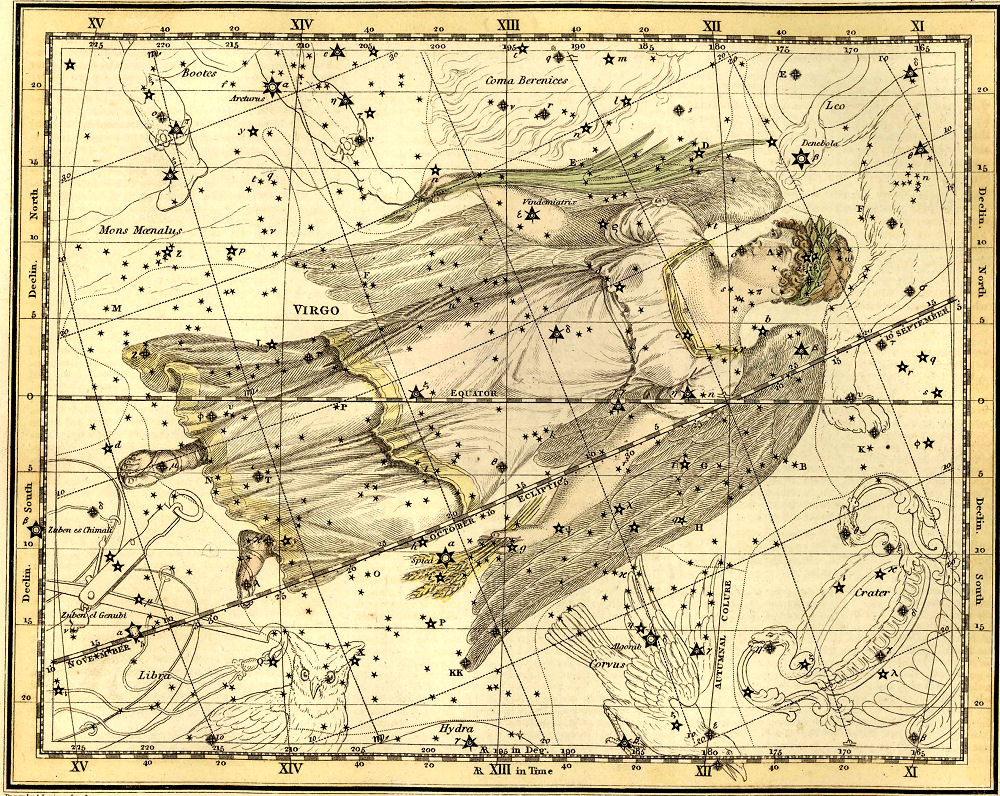
Virgo - Celestial Atlas by Alexander Jamieson - 1822
| HOME |
|---|

Reclining on her side, Virgo, the virgin, stretches across the southern sky, the second largest constellation in the heavens. In Greek myth the constellation Virgo is associated with Persephone, daughter of Zeus (Jupiter), king of the gods, and Demeter (Ceres), the goddess of agriculture. The story tells of Hades (Pluto) being so captivated by the virginal beauty of Persephone that he abducted her, and carried her off to the underworld to be his wife. Her mother, Demeter was so upset by this, she completely neglected her duties as goddess of agriculture, and famine spread over the entire world. Naturally, Zeus could not let this stand, and decreed that Persephone should leave the underworld and be with her mother for half the year, from March until August. This is the time of year her image appears in the sky, and Demeter does her duty, and crops are sown, cultivated, and harvested. When Virgo leaves the sky in the fall, and descends back into the underworld, Demeter again abandons her duties, and the earth lies fallow until the virgin reappears again in the spring. The figure of Virgo is often depicted with a stalk of wheat in her hand, representing, as she does, the coming and going of the growing season.
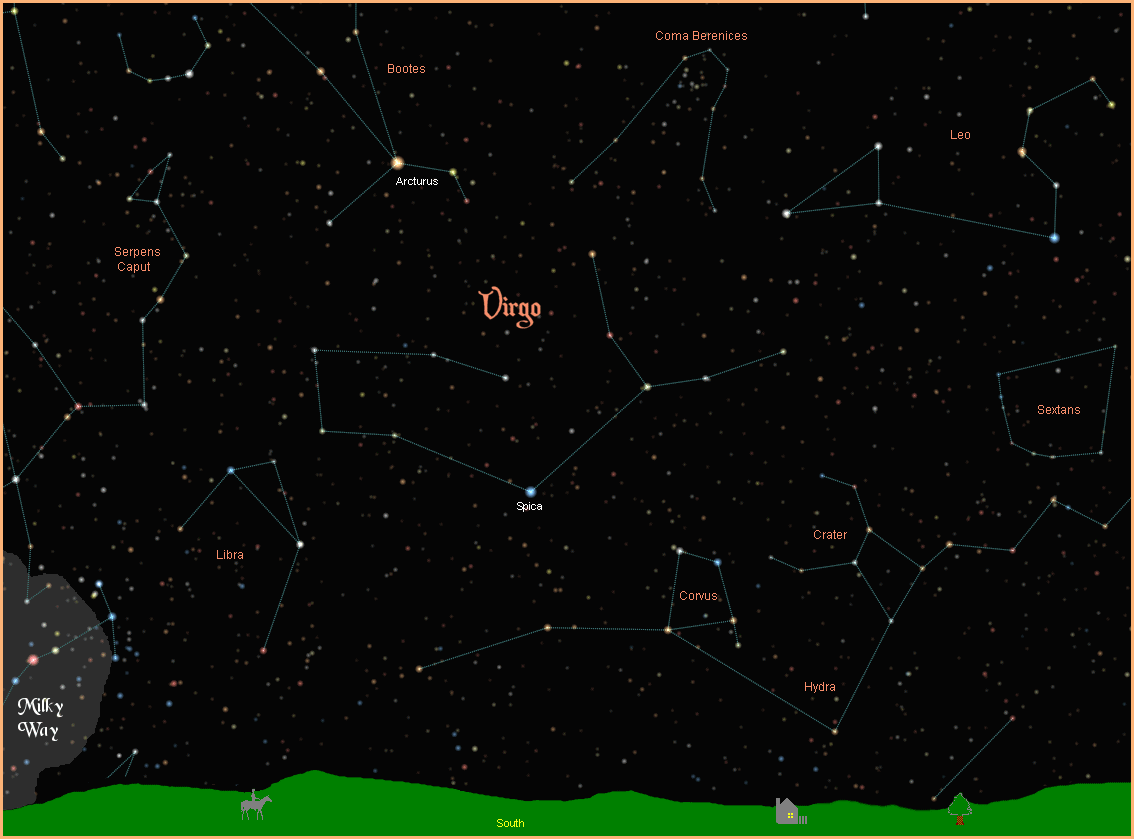
The bright blue/white star Spica is the alpha star in the constellation Virgo. With a magnitude of 1.04 it is the fifteenth brightest star in the sky, and impossible to miss. Spica comes from the Latin and means ear of wheat, an historical symbol of agriculture. Spica is a close binary, two stars that orbit each other so closely they cannot be visually resolved in a telescope. Both stars are massive, many times larger than the Sun. The primary star, Alpha Virginis A, is a B1III blue giant, ten times more massive than the Sun, and large enough to end its life as a supernova.
The secondary star, Alpha Virginis B, is a B2V blue main sequence star, seven times more massive than the Sun. The Spica system is 249 light years away.
Beta Virginis is the star Savijah. The name comes from the ancient Arabic for barking dog, or kennel. Before they adopted the Greek figure of a maiden, the Arabs saw a lion and a kennel of dogs barking at the lion in the stars of Virgo, and the ancient names have endured. Although it is the Beta star, Savijah is only the fifth brightest star in the constellation. Classified as an F9V yellow main sequence star, it has many similarities with our own Sun. Savijah is 35 light years away with a magnitude of 3.6.
Gamma Virginis is the second brightest star in Virgo, named Porrima, after an ancient goddess of prophesy. It is a binary system, consisting of two stars with similar properties. They have a combined magnitude of 2.74, and are 38 light years away. Porrima is classified as an F0V white main sequence star.
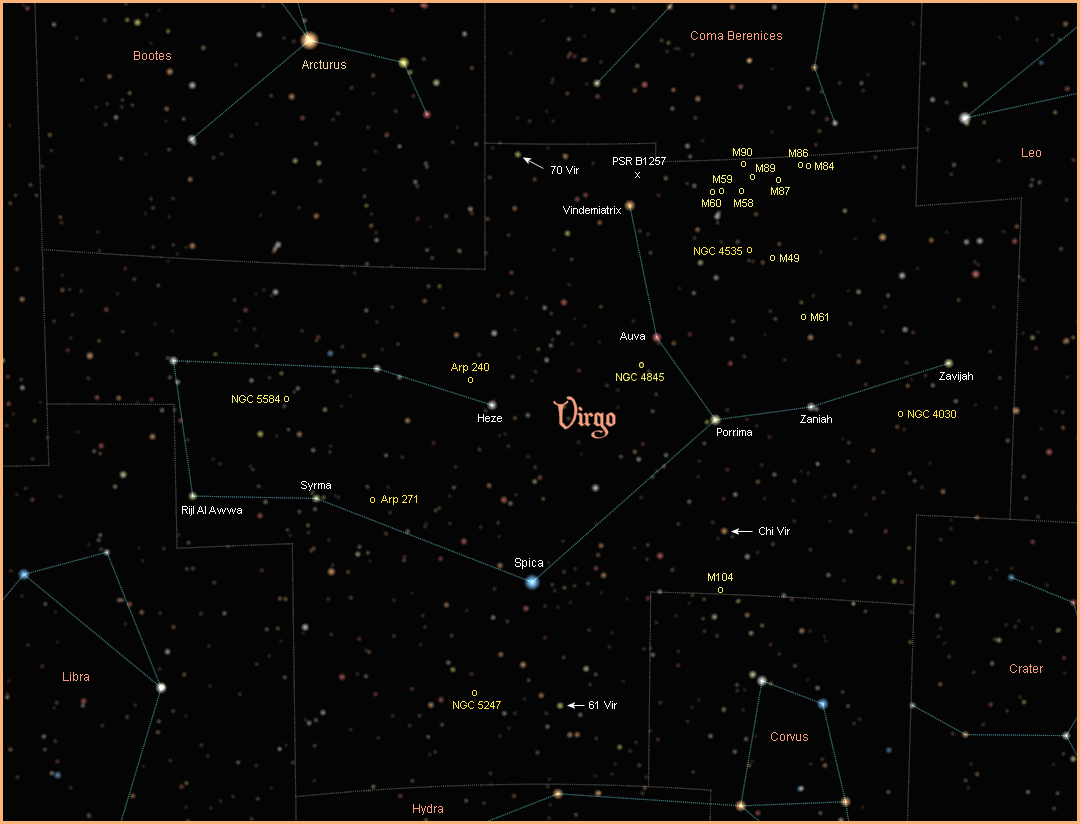
Delta Virginis has the name Auva, from the Arabic al awwa, referring to the barking dogs, of ancient Arabic lore. It is an M2III red giant, with a magnitude of 3.4. It is one of the more distant bright stars in the constellation, 198 light years away.
Epsilon Virginis has the ancient Latin name of Vindemiatrix, the grape gatherer, suggesting that it was once associated with the harvest of the vineyard. With a magnitude of 2.8 it is the third brightest star in the constellation, a G8III yellow giant, about 110 light years away.
Zeta Virginis is traditionally named Heze, although the meaning of the name seems to have been lost in antiquity. It is an A2V white main sequence star, about 74 light years away with a magnitude of 3.4.
Eta Virginis is named Zaniah, another of the ancient Arab "kennel" stars. It is a triple star system with all three stars classified as A2IV white subgiant. The system is very far away at a distance of 265 light years with a combined magnitude of 3.89.
Iota Virginis has the Arabic name Syrma, denoting the train of the virgin's garment. It is an F7III yellow giant. It has a magnitude of 4.1 and is 70 light years away.
The last of the named stars in Virgo is Mu Virginis. It is called Rijl Al Awwa, which means foot of the barker, another of the old Arabic "kennel" stars. It is an F2V yellow main sequence star with a magnitude of 3.9, about 60 light years away.
So far, 36 planets have been discovered in Virgo, orbiting 28 stars. Three of these stars are visible to the naked eye. The brightest of these stars is Chi Virginis (HD 110014), with a magnitude of 4.66. It is a K2III orange giant, with a massive gas giant planet 11 times the mass of Jupiter. The system is very far away at a distance of 318 light years.
Just slightly dimmer, with a magnitude of 4.74, 61 Virginis (HD 115617), has three planets in orbit around it. It is a G7V yellow main sequence star, similar to our Sun, and it is quite close (in astronomical terms), only 27 light years away.
The star 70 Virginis, with a magnitude of 4.98 is faint, but still visible to the naked eye on a dark night. It is a G5V yellow main sequence star, once again similar to our Sun, 59 light years away, with one planet six times larger than Jupiter.
Virgo also contains possibly the most unique planetary system found so far. The star at the centre of this system is designated PSR B1257+12, and it emits very little light in the visible spectrum. It is a pulsar, the rapidly spinning, impossibly dense core remnant of a supernova explosion. Pulsars are highly magnetized and emit powerful radio signals. Abnormalities in the signals from a pulsar in Virgo were first noticed in 1990, and after sixteen years of observations, in 2006 scientists were able to confirm the abnormalities were caused by three planets in orbit around the pulsar. Three small, rocky, possibly Earth-sized planets. There's no telling what kind of spectacular auroras would be created by the powerful electromagnetic waves emitted by the pulsar. The skies of these planets could be a kalaidescope of shifting colours. The bad news is that no life as we know it could possibly exist anywhere near the lethal radiation of a pulsar. The good news (for us) is that all that radiation is very far away, at a distance of about 1000 light years.
For more information on these and other extrasolar planets, visit NASA's New Worlds Atlas, and The Open Exoplanets Catalogue.
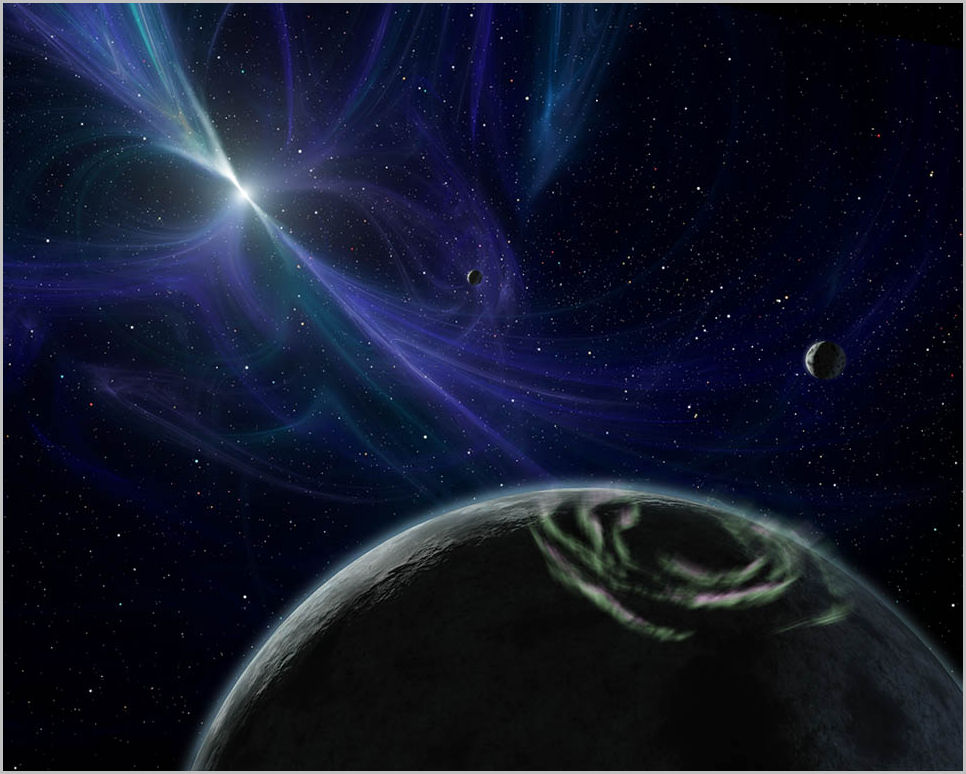
Virgo is a galaxy hunter's dream. She holds in her arms a large group known as the Virgo Cluster, which stretches across the border into Coma Berenices, and contains up to 2,000 galaxies, many of which are visible in backyard telescopes. The cluster is centred about 54 million light years away.
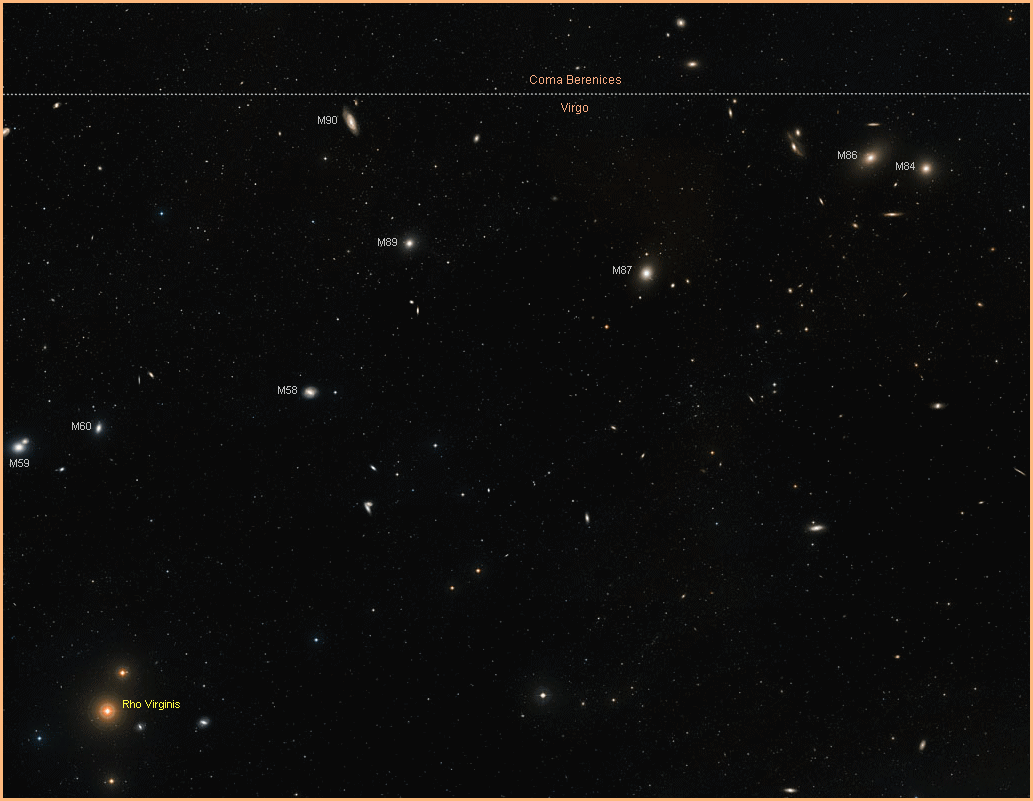
Near the centre of the Virgo cluster is M58, a large face-on spiral galaxy. It is about 62 million light years away, and has a magnitude of 9.7.
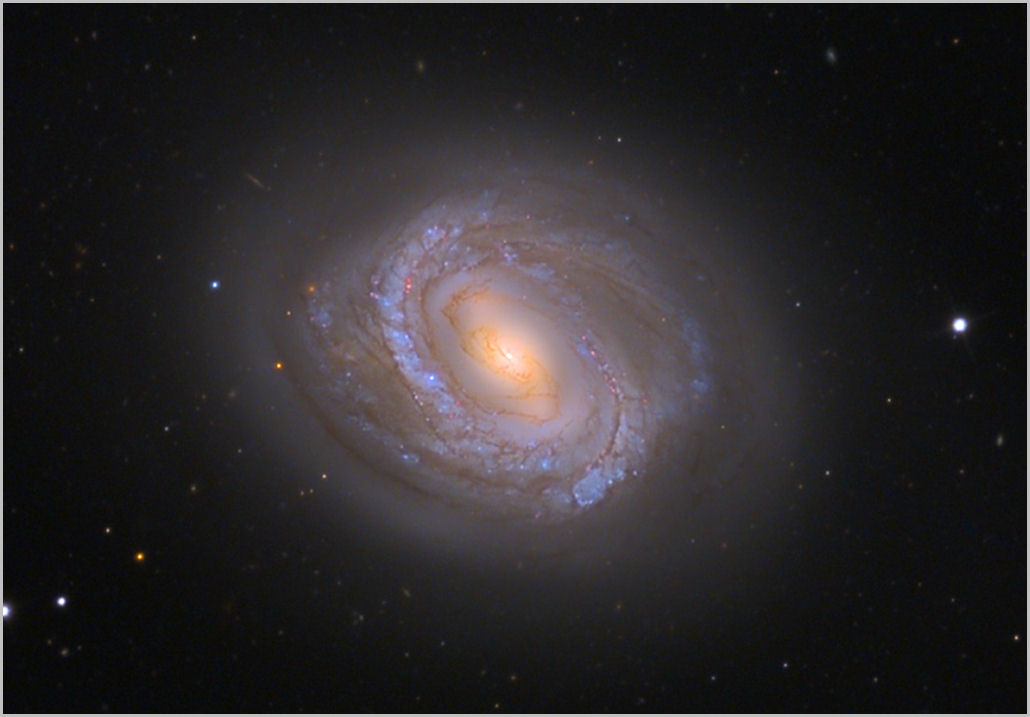
The Virgo cluster contains eleven Messier objects, seven of which are elliptical galaxies: M49, M59, M60, M84, M86, M87 and M89. Elliptical galaxies are elderly galaxies with little or no new star formation, in which virtually all structure has dissipated, leaving a relatively featureless spherical mass of stars, and appearing as not much more than an indistinct ellipse of light, even in the largest of telescopes. In the image below, at a distance of 54 million light-years, M60 is visually paired with spiral galaxy NGC 4647, 9 million light-years farther away behind it.
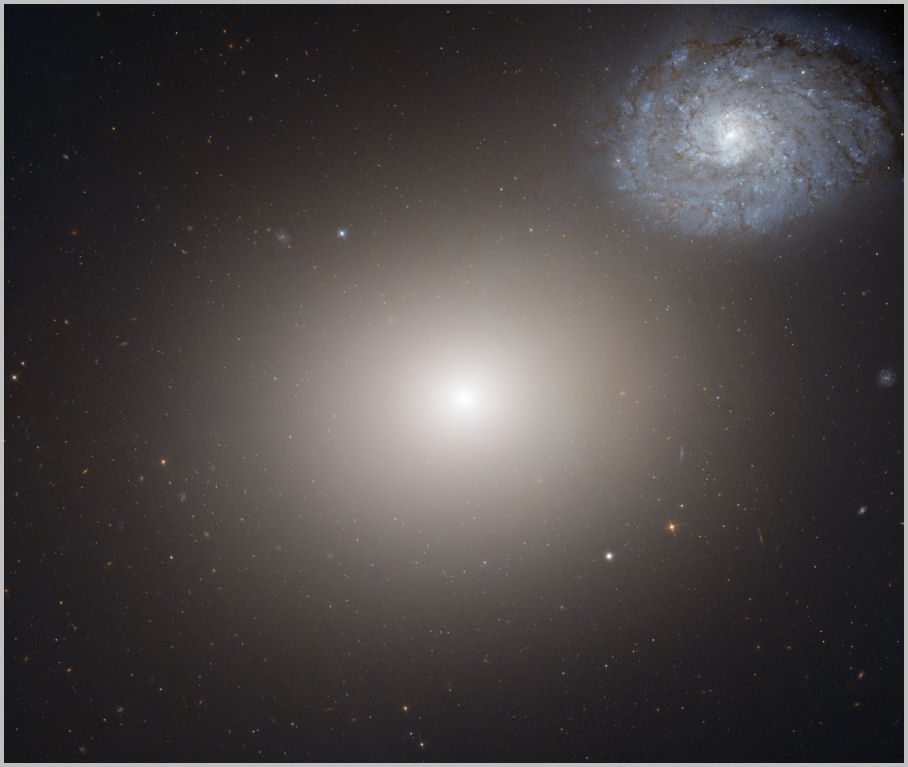
On the southern edge of the Virgo cluster is M61, a large face-on spiral galaxy 100,000 light years across, the same size as our Milky Way galaxy. It is classified as a "starburst galaxy" containing an unusually high amount of star formation. It is about 50 million light years away, and has a magnitude of 9.6.
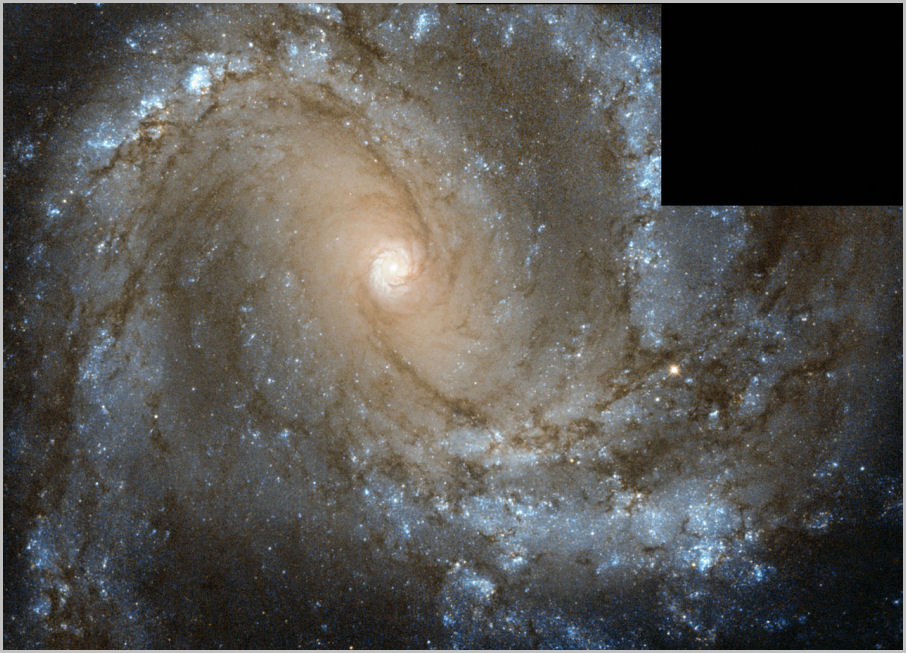
In the centre of the Virgo cluster is M87, an elliptical galaxy with a difference. It is one of the largest galaxies known - the largest in the Virgo cluster - containing trillions of stars. It also possesses the unique feature of a visible jet of material ejected from the black hole at the centre of the galaxy. The jet is 5,000 light-years long in the visual spectrum, and stretches 100,000 light years out into space at radio wavelengths. The galaxy is about 53 million light years away with a magnitude of 8.6.
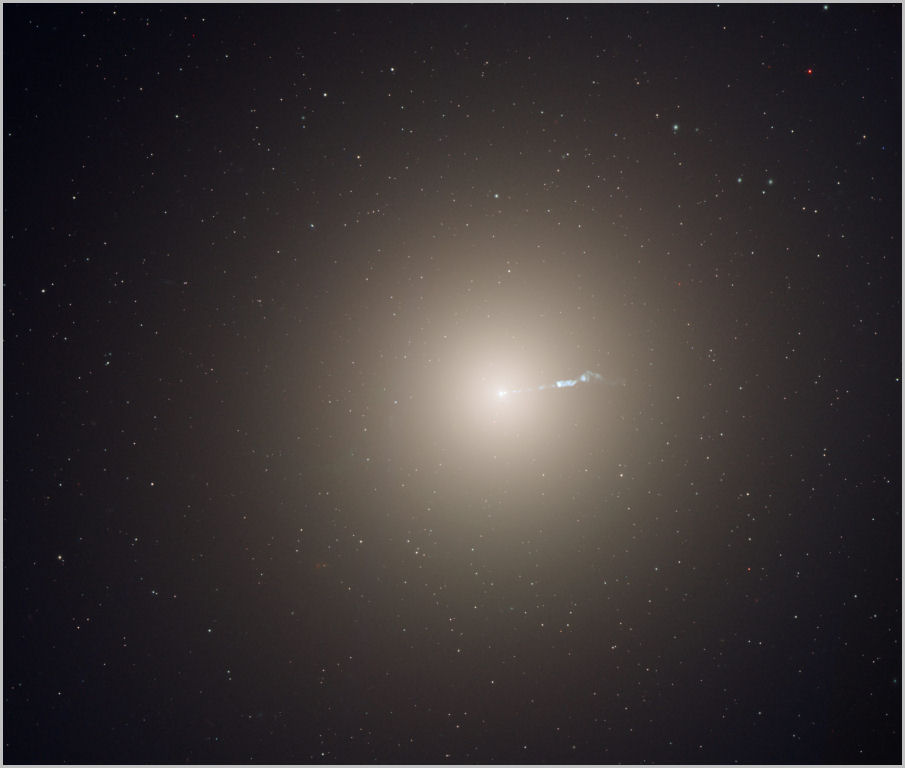
Sitting right on the border with Coma Berenices is M90, a spiral galaxy about 60 million light years away with a magnitude of 9.5.
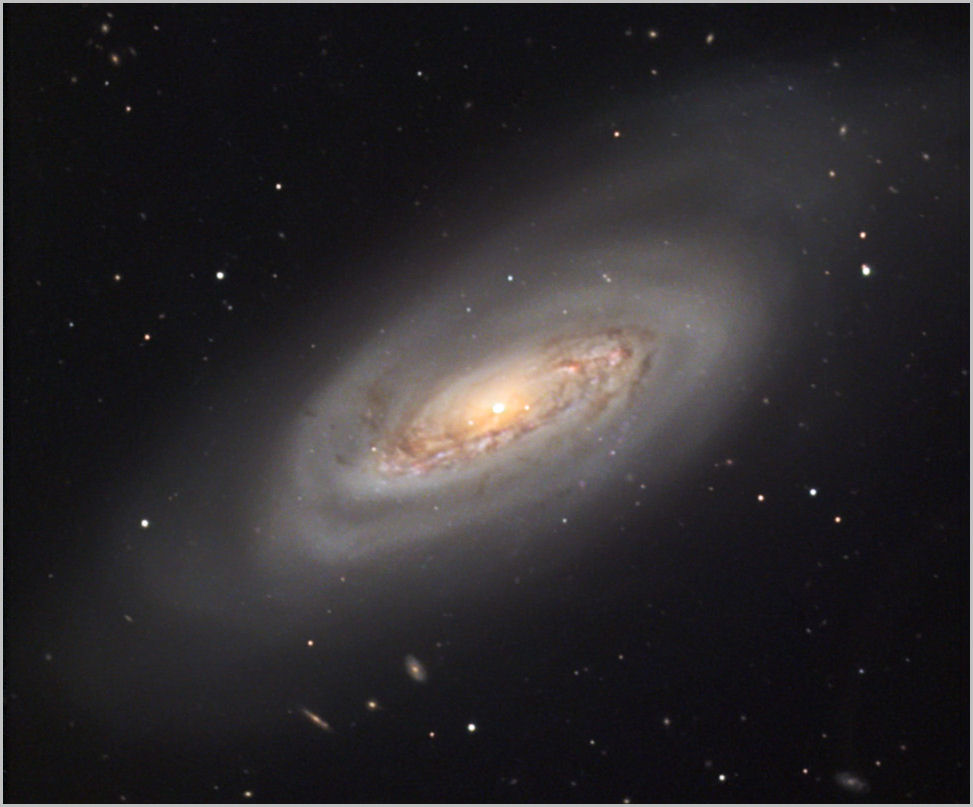
Just east of the elliptical M49 is the big, beautiful spiral NGC 4535, with a magnitude of 10.0, sometimes called The Lost Galaxy, due to its ghostly appearance in a small telescope.
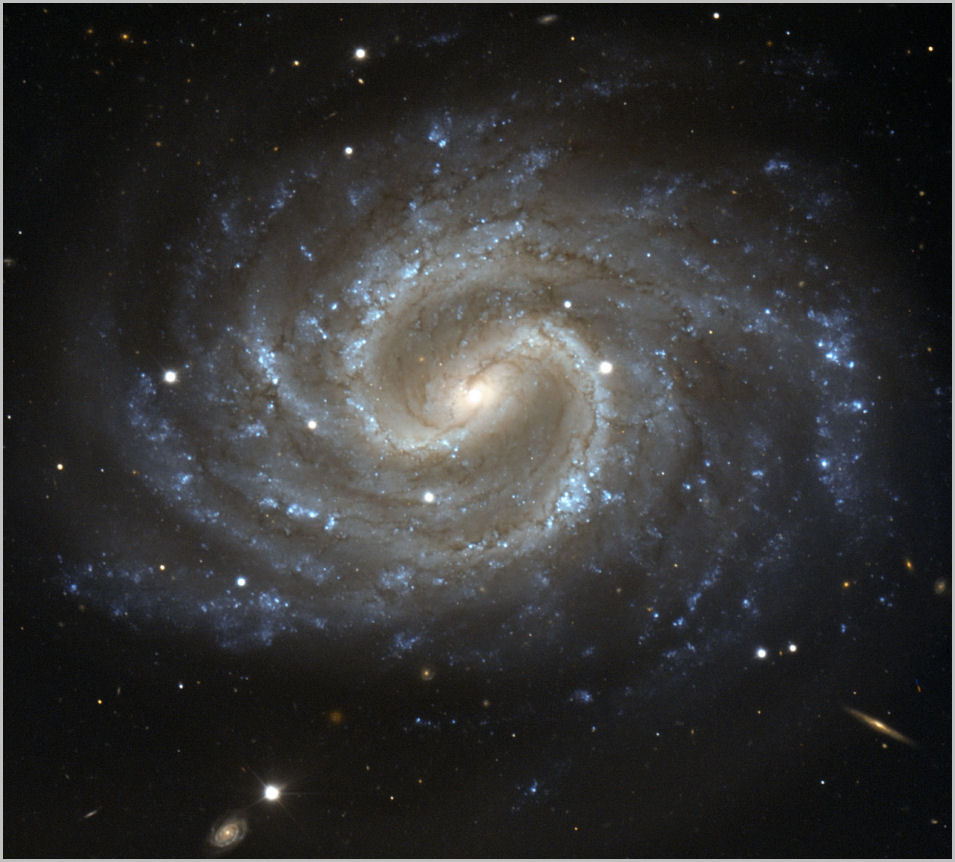
Moving away from the Virgo cluster down to the southern edge of the constellation, we find M104 (NGC 4594), also known as The Sombrero Galaxy, only 28 million light years away, quite close as galaxies go. Seen almost edge on, the galaxy is 50,000 light years across (half the size of our Milky Way galaxy), and is unique for the brightness of its central core. Its magnitude of 8.0 makes it a good target for a small telescope. In October, 2003, the Hubble Space Telescope took one of its most iconic images - a stunning profile of the Sombrero Galaxy in all its glory.
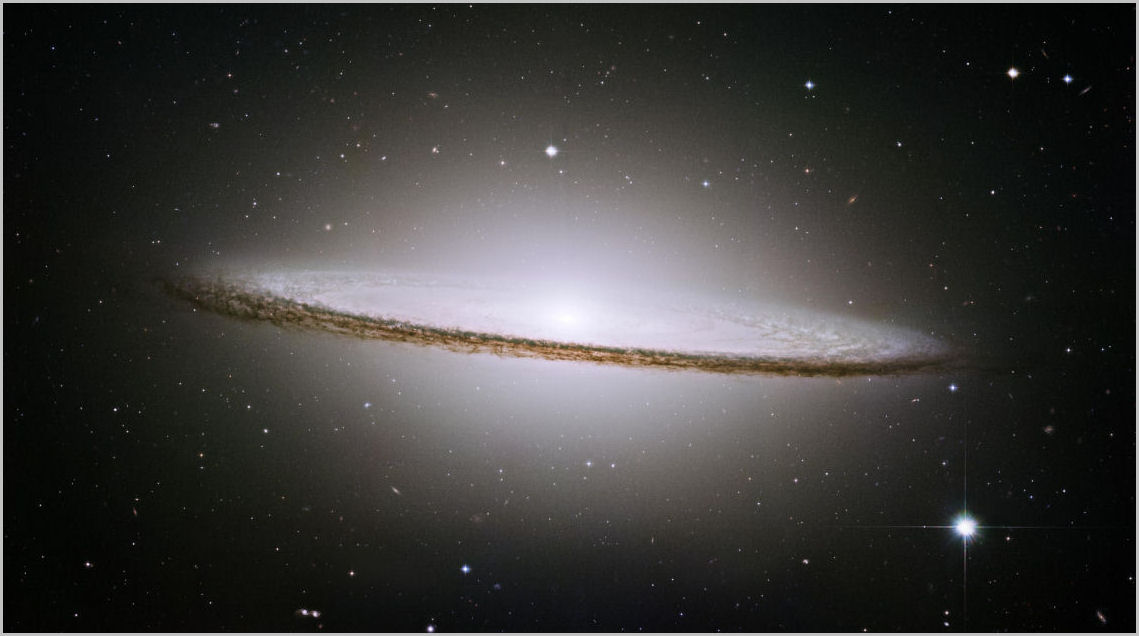
Back out at a distance of 60 million light years is the unique NGC 5247, at magnitude 10.0, with its two prominent spiral arms, imaged below in infrared light.
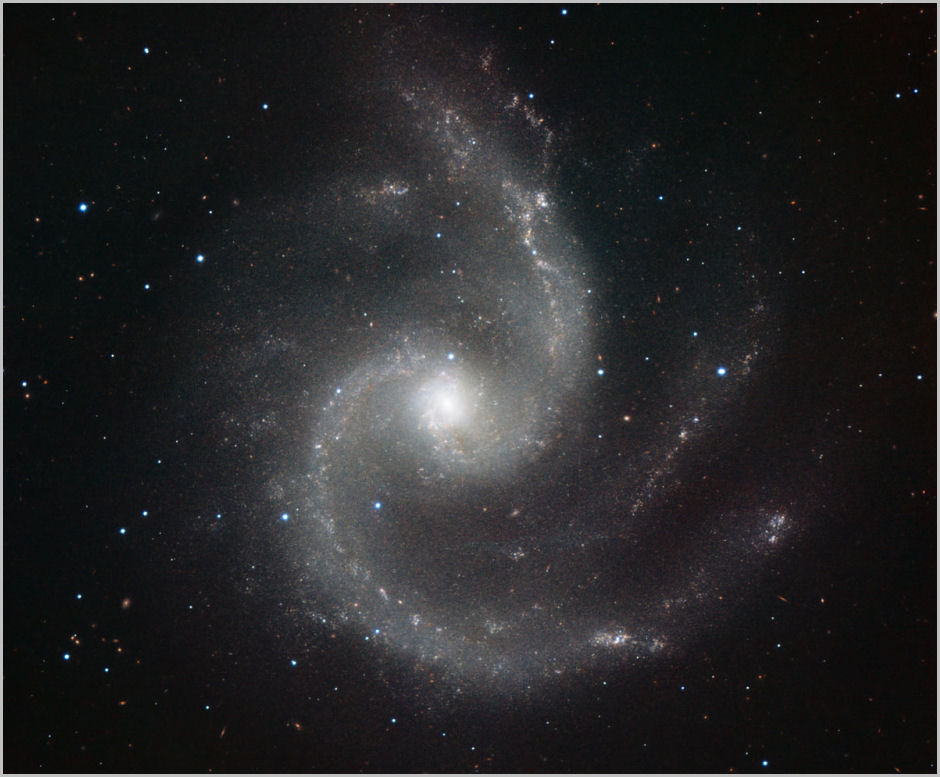
At a distance of 65 million light years is NGC 4030, with a magnitude of 10.60, also imaged in infrared.
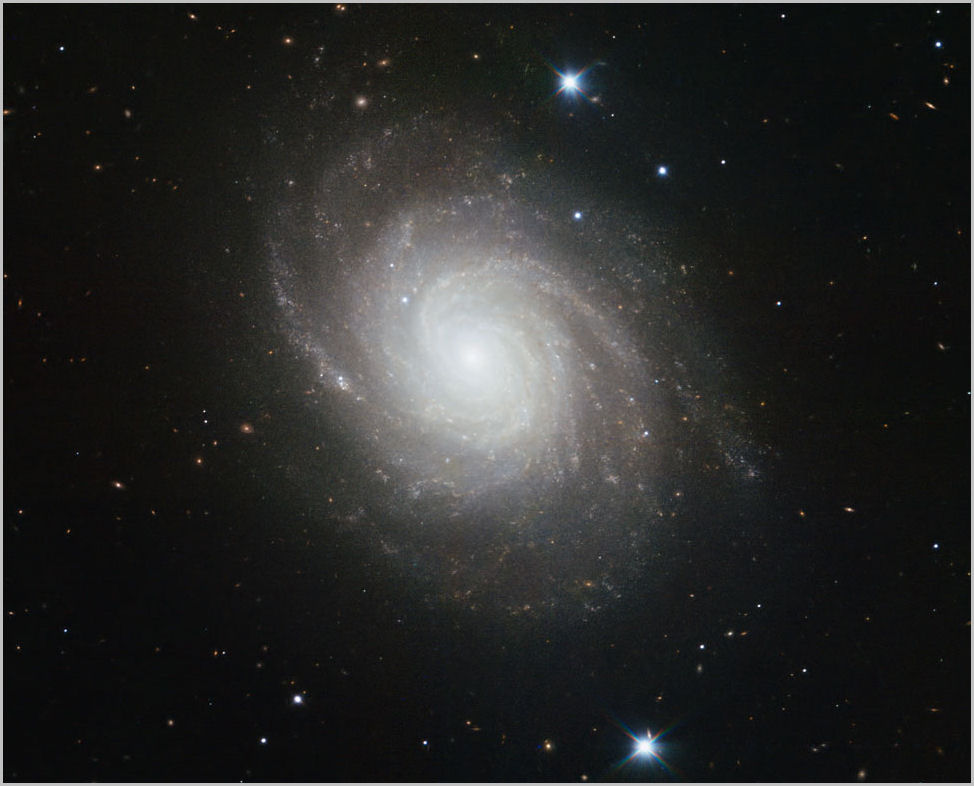
Also 65 million light years away is spiral galaxy NGC 4845, with a magnitude of 11.20.

Over in the eastern corner of Virgo is NGC 5584, a spiral galaxy 72 million light years away with a magnitude of 11.5. It is home to 250 special stars known as "Cepheid Variables". These types of stars, first discovered in the constellation Cepheus, have predictable variabilities that make them very useful in measuring the vast distances in space. The Cepheids in NGC 5584 have been particularly helpful in measuring the expansion rate of the Universe, known as "Hubble's Constant".
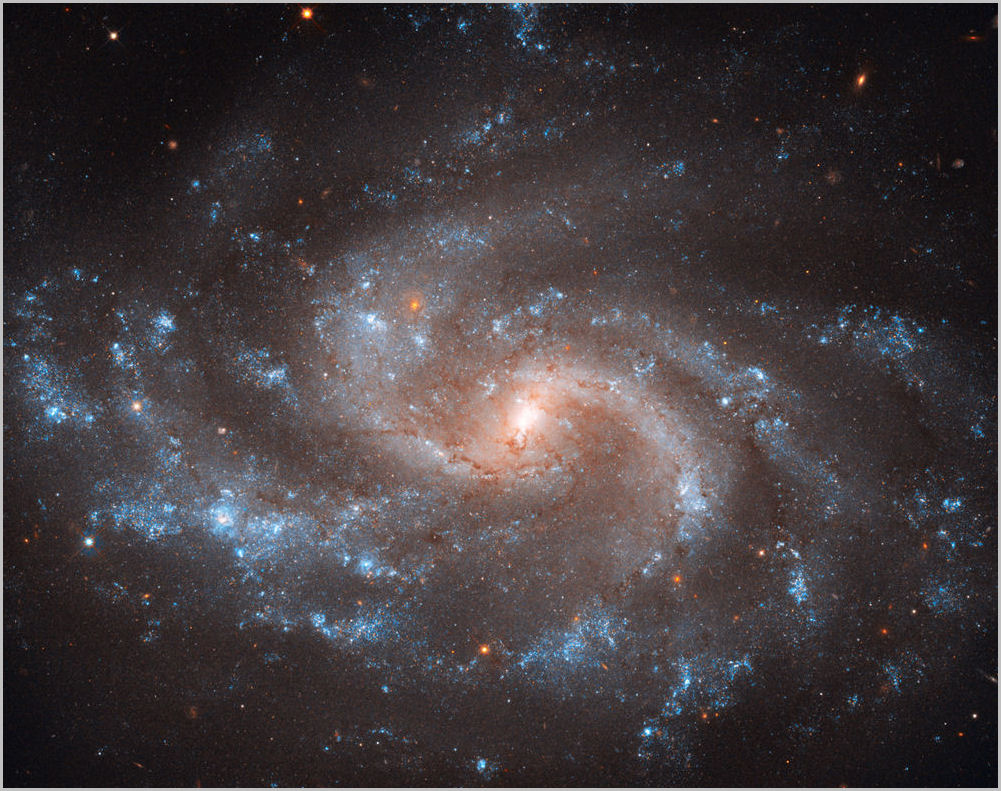
Near the centre of the constellation, moving out to a distance of about 90 million light years, is the interacting pair of spiral galaxies, NGC 5426 and NGC 5427, collectively known as Arp 271, with a magnitude of 12.1.
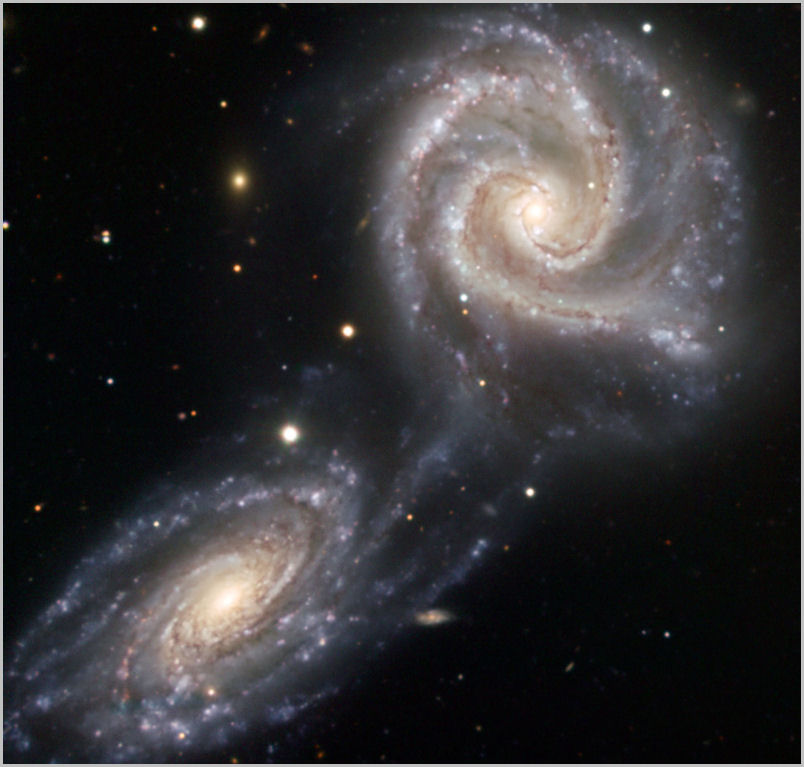
Jumping out to the very great distance of 300 million light years, lined up near the bright star Heze, is the interacting pair of spiral galaxies, NGC 5257 and NGC 5258, collectively known as Arp 240, with a magnitude of 12.9.
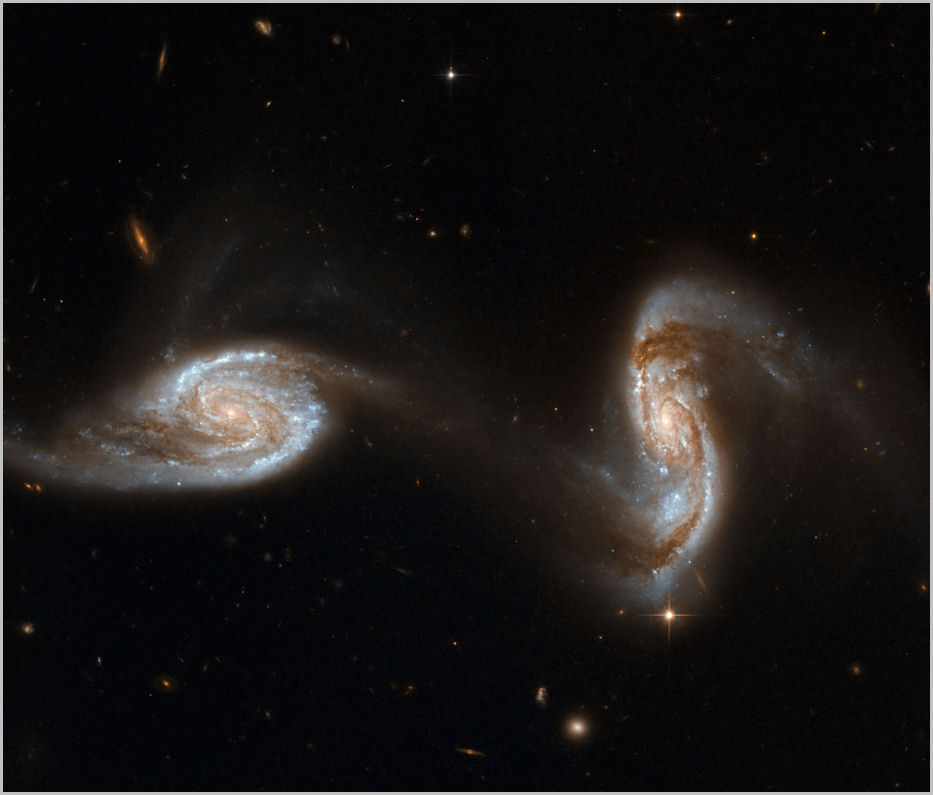
|
|
|
|
|
|